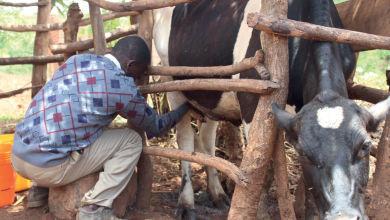Global commodity prices decline worries farmers
Global commodity prices are projected to fall to their lowest level in six years in 2026, a development local farmers fear will squeeze their profit margin despite rising production costs.
The World Bank Group latest Commodity Markets Outlook shows that prices are forecast to drop by seven percent in 2025 and 2026 driven by weak global economic growth, a growing oil surplus and persistent policy uncertainty.
The bank further warns that commodity prices could fall more than expected during the forecast horizon if global growth remains sluggish amid prolonged trade tensions and policy uncertainty.

However, the outlook indicates that fertiliser prices are projected to surge by 21 percent in 2025, reflecting higher input costs and trade restrictions before easing by five percent in 2026.
In an interview yesterday, Farmers Union of Malawi (FUM) president Maness Nkhata said prices of seed and other farm inputs have gone up beyond the reach of most farmers; hence, a further decline in commodity prices will likely discourage farmers from investing further in the agriculture sector.
She said: “Moving forward, we plead with the government to adopt a universal subsidy programme to cushion farmers from this loss.
“We also implore the government to significantly invest in innovation, research and development that will result in the development of technologies that will lower cost of production and improve productivity.”
The development comes at a time commodity dependence has remained a significant challenge in global merchandise trade for Malawi.
United Nations Conference on Trade and Development data show that while the share of merchandise exports for Malawi has shrunk from $1.3 billion (about K2.2 trillion) in 2014 to $958 million (K1.6 trillion) between 2021 and 2023, the country’s dependence on commodities for exports has remained elevated at 91 percent, raising questions about diversification drive and risks to external shocks.
Out of this, commodity exports constituted $868.5 million (about K1.5 trillion) with agricultural products accounting for about 89.5 percent between 2021 and 2023 as tobacco, at 45.3 percent, remained the lead export crop.
Speaking separately on Wednesday, agriculture economist Henry Kamkwamba observed that falling global commodity prices coupled with rising fertiliser prices could have a double effect on people’s welfare as rising input costs directly means high production costs.
He said: “In the short term, our farmers will be hurt because increasing input prices will erode their purchasing power, but in the medium-term, after harvest, they might push the burden to consumers.
“That is where the biggest trouble will come from. Higher food prices will spell instability in urban areas.”
Kamkwamba urged government to sponsor large farming enterprises to produce strategic food commodities to make food cheaper although this could distort private farmers’ profitability.
World Bank Group chief economist and senior vice-president for development economies Indermit Gill observed in the report that commodity markets are helping to stabilise the global economy with falling energy prices contributing to the decline in global consumer-price inflation.
“But this respite will not last. Governments should use it to get their fiscal house in order, make economies business-ready and accelerate trade and investment,” he said.
Ministry of Industrialisation, Business, Trade and Tourism spokesperson Patrick Botha is on record as having said Malawi also intends to leverage regional integration through its participation in regional blocs such as the African Continental Free Trade Area, Tripartite, Southern African Development Community and the Common Market for Eastern and Southern Africa as opportunities to explore new markets for value-added products.
Malawi launched the National Export Strategy II in 2021 to achieve export competitiveness focusing on increasing products manufactured in Malawi to regional markets.
National Statistical Office data show that every year, Malawi imports goods worth about $3 billion (about K5.2 trillion) against exports valued at $1 billion (about K1.7 trillion), creating a $2 billion (about K3.5 trillion) trade deficit.





